Tessa’s Recipe Rundown
Taste: Tons of bright fresh lemon flavor! The perfect balance of sweet and tangy.
Texture: Ultra-buttery and moist with a thick, luscious glaze on top.
Ease: The batter comes together in minutes.
Why You’ll Love This Recipe: The most perfect spring or summer treat that any lemon lovers will go crazy over!
This post may contain affiliate links. Read our disclosure policy.
This Iced Lemon Pound Cake Loaf is even BETTER than the Starbucks Lemon Loaf.
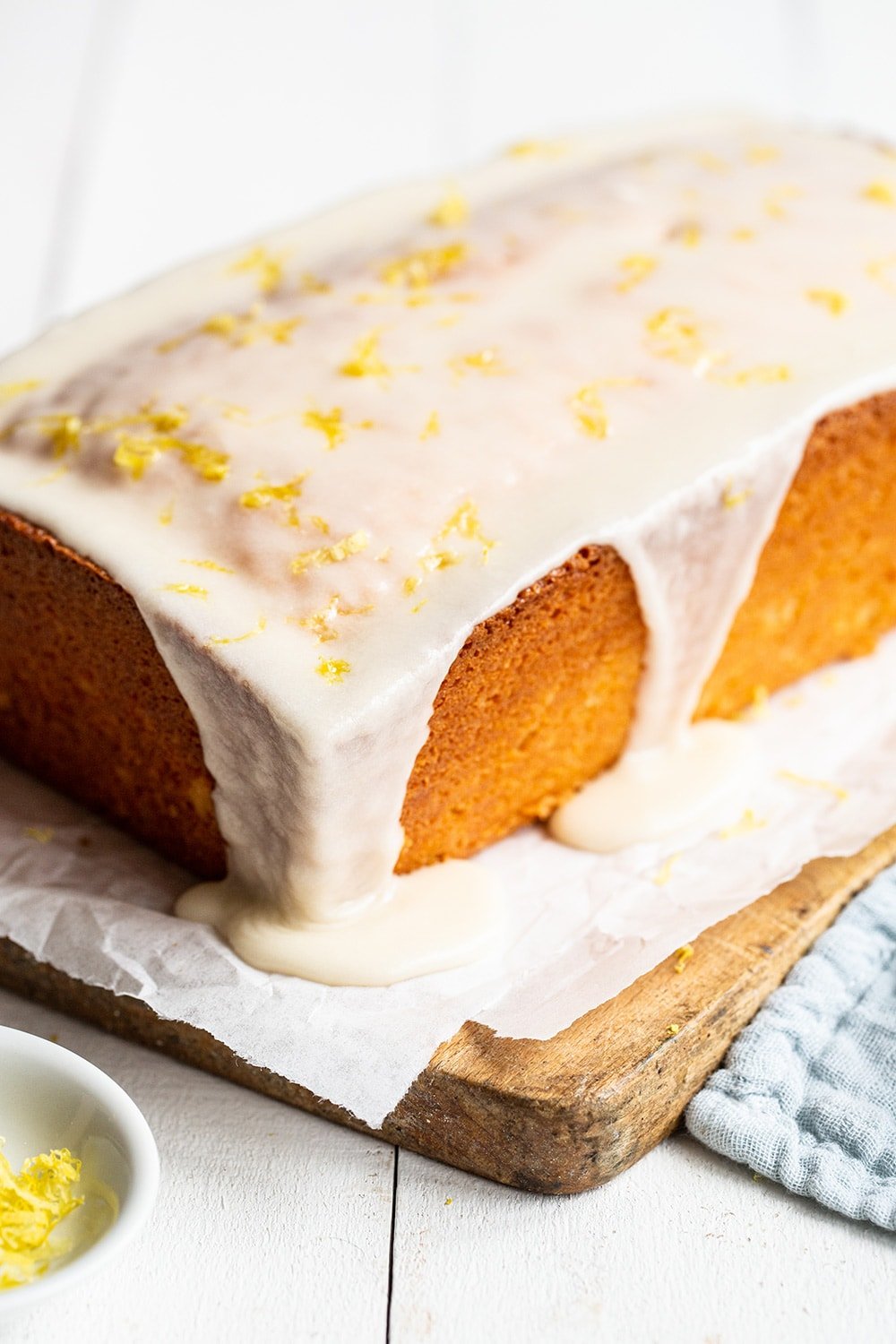
Right behind chocolate, lemon is one of my favorite flavors. Every spring and summer, I crave sweet treats that are bright and sweet but still rich and satisfying.
When I started working on perfecting the lemon loaf, I envisioned an ultra-moist and buttery bite, bursting with lemon flavor.
Many lemon recipes seem to lose the intensity of the lemon flavor after baking, so I worked to find a way to pack a strong lemon punch without using difficult-to-source ingredients.
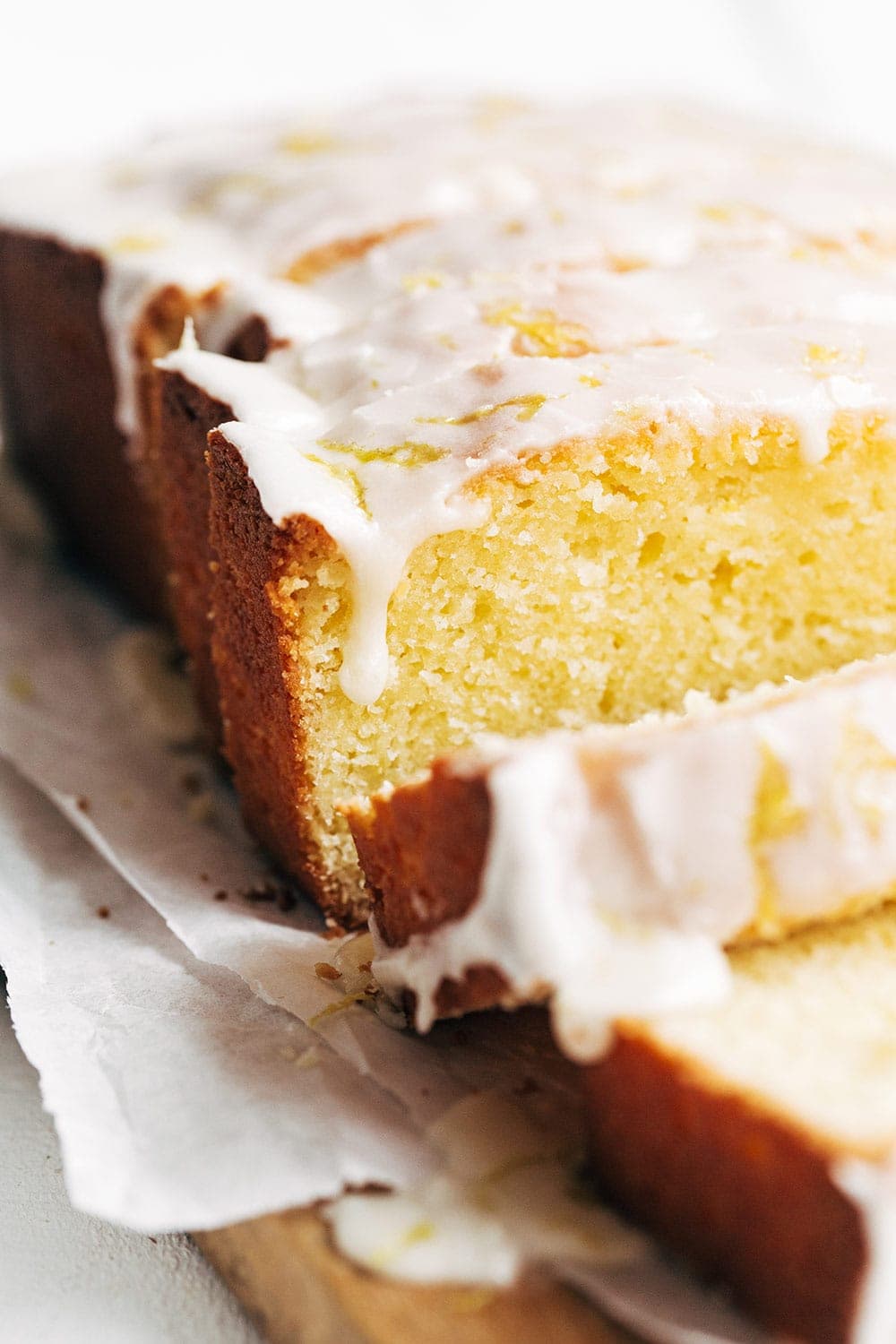
I tested batch after batch, tweaking and experimenting until I was obsessed with the final result!
Heavily inspired by Baked and Cook’s Illustrated recipes, this Starbucks Copycat Lemon Loaf recipe turned out better than I could have imagined.
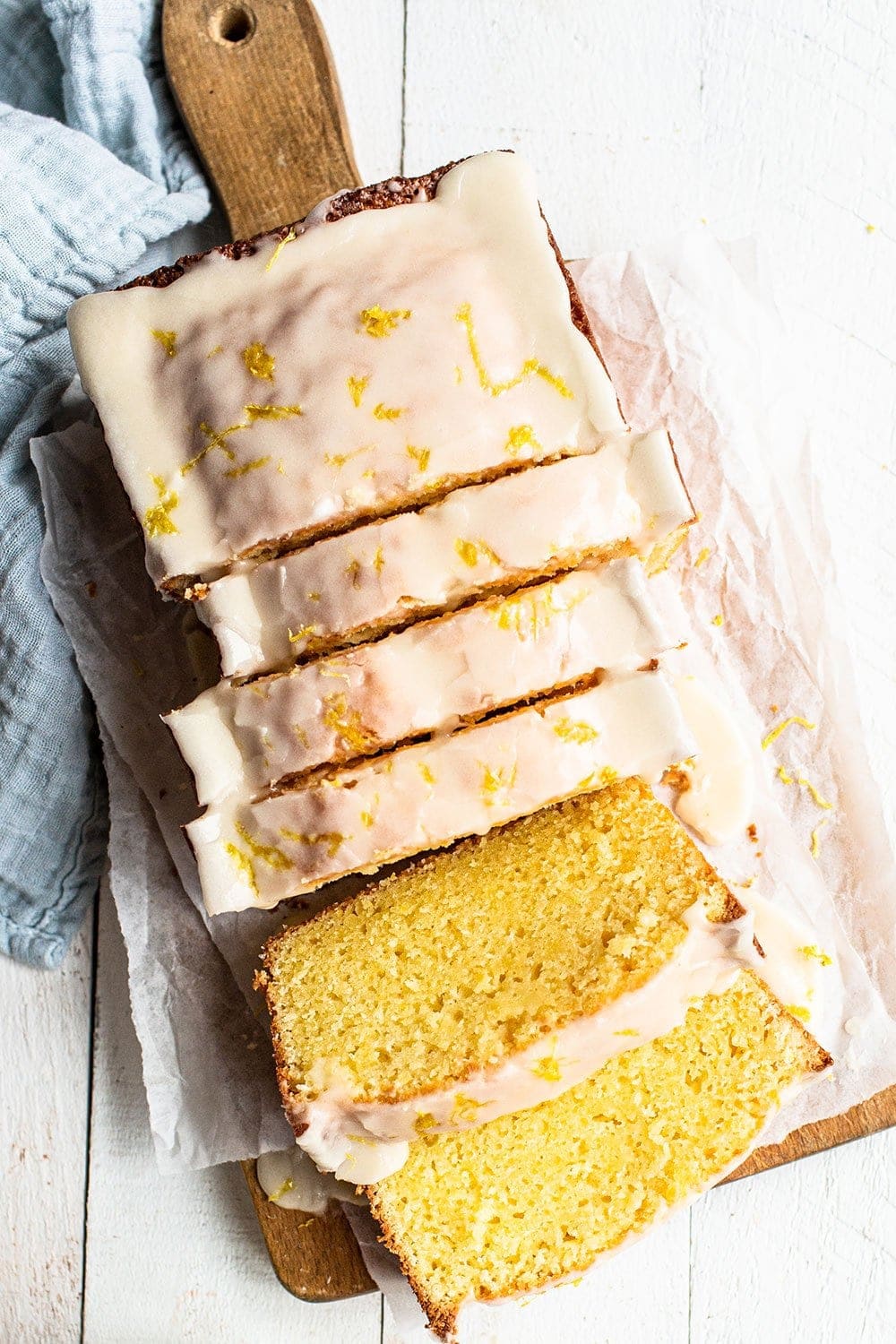

Sprinkle of Science
How to Make Lemon Pound Cake Loaf
What is Pound Cake?
Pound cake is traditionally made with a pound of each of the four main ingredients: flour, butter, eggs, and sugar. While this makes a traditional pound cake recipe easy to remember, it doesn’t always produce the best results. You’ll see my recipe below still uses a lot of butter and sugar, but the ratios vary slightly, for the best flavor and texture.
How to Make Moist Lemon Pound Cake
- Measure your ingredients correctly: I highly recommend using a digital kitchen scale to measure your ingredients, especially your flours. It’s SO easy to accidentally compact too much flour into your measuring cups, which will result in dry, lackluster pound cake. If you don’t have a scale, use the spoon-and-level method instead.
- Don’t reduce the sugar: It might seem simple to lower the sugar to cut sweetness, but this impacts more than you might expect. Lowering the sugar will impact the texture, structure, and more. Learn more about sugar’s role in baking here.
- Eggs and Sour Cream: These ingredients are crucial to this recipe, assisting in creating a rich, moist, and tender loaf. Feel free to use full-fat plain unsweetened yogurt instead of sour cream. I don’t recommend using an egg replacement unless you’re up for some experimenting.
- Butter: We’re using plenty of butter in this pound cake recipe, for a beautifully moist, buttery loaf with the best flavor AND texture. I always recommend using unsalted butter in baking. I have not tried any butter substitutes here.
Do I Have to Use Cake Flour?
This recipe uses half all-purpose flour and half cake flour for the best of both worlds. When using only all-purpose flour, the loaf had more of a muffin texture. When using only cake flour, the loaf was too delicate and crumbly.
While you can use only all-purpose flour, I highly recommend using real cake flour for the best texture here. Learn more about cake flour (and why I don’t use DIY substitutes) here.
Why Does This Loaf Recipe Require a Blender or Food Processor?
Like all pound cakes, this is a high-ratio cake, meaning there’s as much or more sugar than flour. This provides a beautifully moist tight-crumbed texture without needing to cream butter and sugar with an electric mixer.
Instead, a blender or food processor not only assists in making quick and easy work of making this batter, but it also helps emulsify all the rich ingredients together into a smooth batter.
The last ingredient is the melted butter, which must be drizzled in a steady stream as the blender or food processor runs to perfectly emulsify.
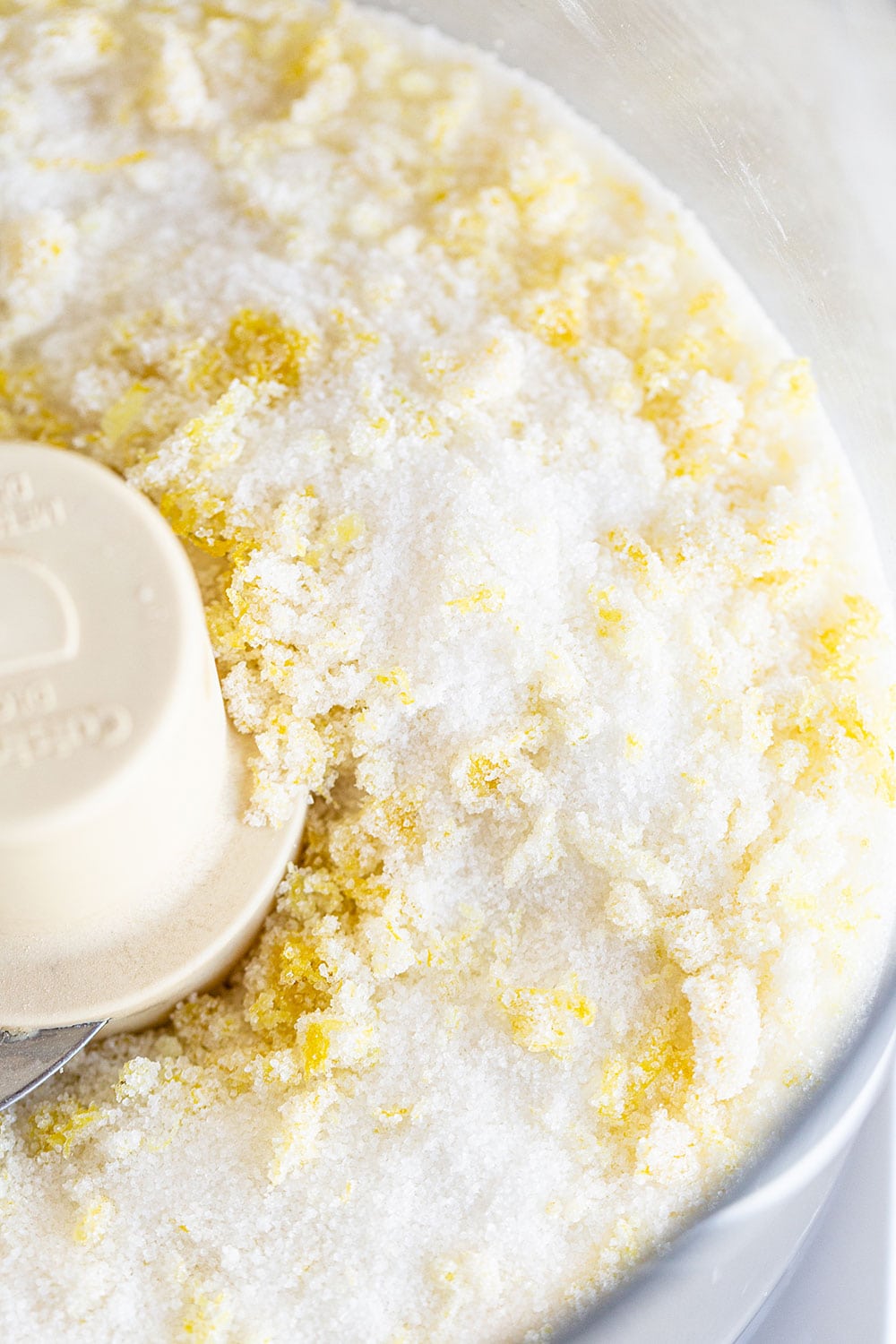
Can I Use a Different Sized Pan?
This recipe uses a 9 x 5-inch light-colored metal loaf pan for best results.
To Bake in a 8 1/2 x 4 1/2-inch Pan:
- Add about 5 minutes to the baking time. This is the pan I use for smaller loaves. Loaves baked in this slightly smaller pan will rise higher and look taller, more like what you’d see in a bakery case.
- If you use an even smaller pan, you may run the risk of the loaf overflowing, or collapsing slightly in the center, especially if you live at higher altitudes.
To Bake in a Bundt Cake Pan:
- Double all ingredients and bake in a well-greased 10 to 12 cup bundt pan and bake for about 50 to 60 minutes.
- OR, use my Lemon Bundt Cake recipe, which is lighter and more cakey than this pound cake recipe.
To Bake in Glass or a Ceramic Pan:
- I tested this recipe in a metal pan because it conducts heat quickly and efficiently.
- Glass and ceramic don’t conduct heat as effectively, so if you use this style pan, decrease the baking temperature to 325°F and increase your baking time by about 10 minutes.
- Check out my article on Glass vs. Metal Pans.
The Secret to Bright Lemon Flavor in Pound Cake (Even After Baking)
Lemon flavor can dull during the baking process. That’s why this recipe calls for two whole tablespoons (not teaspoons!) of both lemon zest and juice. Then there’s a tablespoon of fresh juice in the glaze, which helps give a fresh punch of lemon flavor. You’ll need about 3 large lemons in total.
The Lemon Glaze for Pound Cake
Be sure to wait until your Lemon Pound Cake is completely cooled before glazing, to avoid the glaze absorbing or melting.
Note: The consistency of your glaze will depend entirely on the brand of powdered sugar you’re using and how humid it is in your kitchen. Here’s how to tweak the glaze as needed:
- To Make the Lemon Glaze Thinner: Add more lemon juice or milk, 1 teaspoon at a time.
- To Make the Lemon Glaze Thicker: Add more powdered sugar, 1 teaspoon at a time.
How to Store Lemon Pound Cake
The cooled, glazed Lemon Pound Cake Loaf can be covered in foil or plastic wrap and stored at room temperature for up to 2 days.
Can I Freeze This Lemon Loaf?
Yes! Wrap the unglazed loaf tightly in plastic wrap and store for 1 month. Thaw overnight in the fridge and then bring to room temperature before glazing. Your loaf will likely develop a moist or tacky surface on top, but the glaze should disguise it nicely.
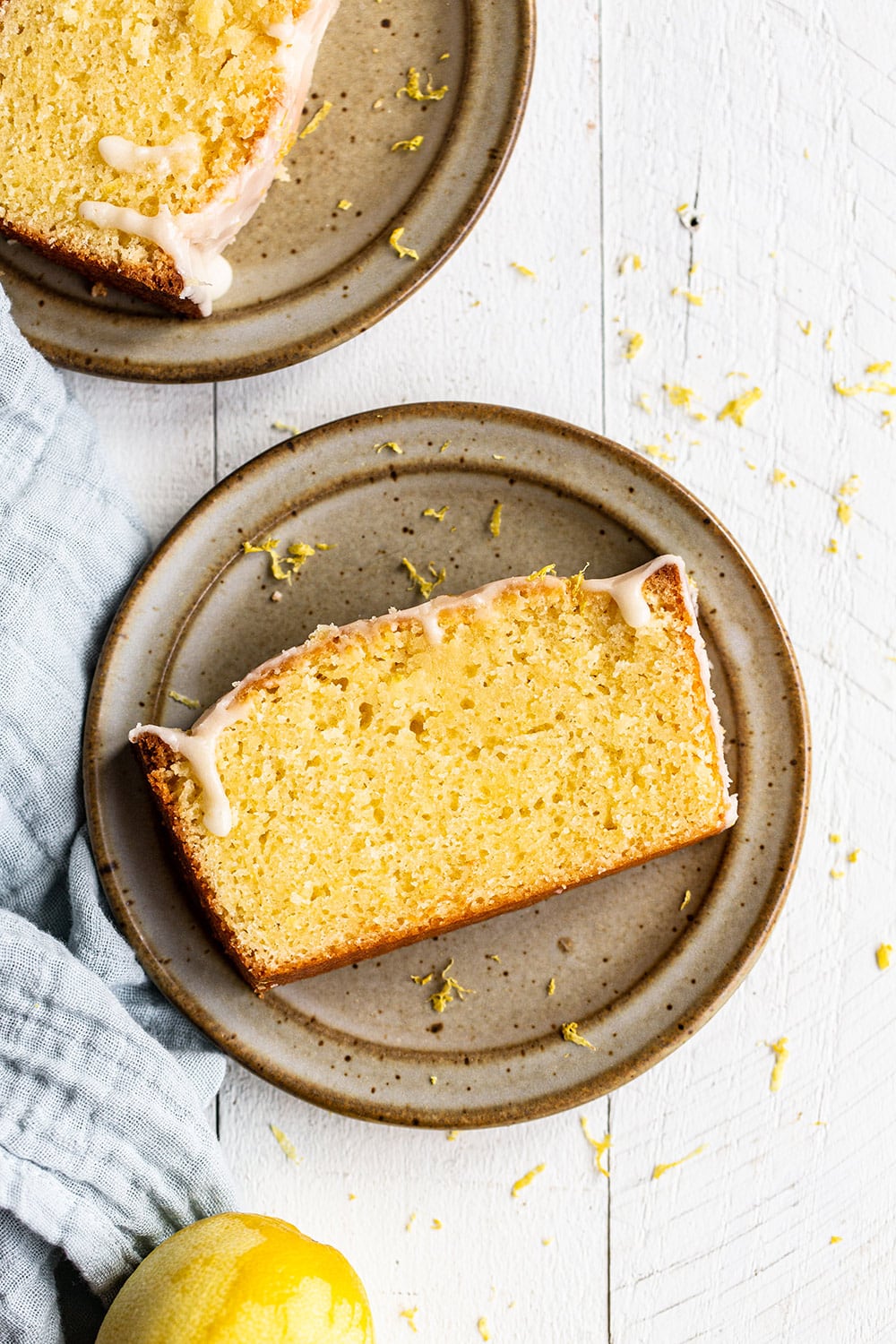
More Lemon Recipes You’ll Love:
- Glazed Lemon Cookies – my favorite lemon cookies!
- Lemon Poppy Seed Muffins
- Lemon Cheesecake
- Raspberry Lemonade Cheesecake Bars
- Lemon Yogurt Zucchini Bread
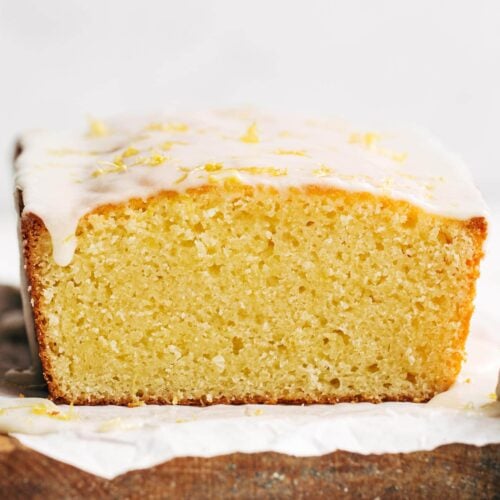
Lemon Pound Cake Loaf
Email This Recipe
Enter your email, and we’ll send it to your inbox.
Ingredients
For the cake:
- 3/4 cup (95 grams) all-purpose flour
- 3/4 cup (85 grams) cake flour
- 1 teaspoon baking powder
- 1/2 teaspoon fine sea salt
- 1 1/4 cups (250 grams) granulated sugar
- 2 tablespoons fresh lemon zest (from about 3 lemons)
- 2 tablespoons fresh lemon juice (from about 1 lemon)
- 4 large eggs, at room temperature
- 1/4 cup (57 grams) sour cream or plain yogurt, at room temperature
- 2 sticks (227 grams) unsalted butter, melted and cooled
For the glaze:
- 1 cup (125 grams) powdered sugar
- 1 tablespoon fresh lemon juice
- 1 tablespoon milk or cream
Instructions
Make the loaf:
- Preheat the oven to 350°F. Grease a 9 by 5-inch metal loaf pan.*
- In a large mixing bowl, sift together the cake flour, all-purpose flour, baking powder, and salt. Set aside.
- In the bowl of a food processor or high-speed blender, combine the sugar and lemon zest. Pulse a few times to evenly distribute the zest. Add the lemon juice, eggs, and sour cream and pulse until combined. On low speed, gradually drizzle in the melted butter in a slow steady stream until well combined.
- Make a well in the dry ingredient mixture. Pour in the wet ingredients. Mix gently with a rubber spatula until just combined. Batter will be slightly thin.
- Pour mixture into prepared pan and spread evenly. Bake until a toothpick inserted into the center comes out clean or with just a few moist crumbs attached, about 50 minutes if using a metal pan, or once an internal temperature of 200-205°F is reached.
- Cool in pan for 15 to 20 minutes then run a thin flexible knife around the edges before inverting onto a wire rack to cool completely.
Make the glaze:
- In a small bowl, whisk together the glaze ingredients until thick but pourable. Add more juice or milk to thin out or more sugar to thicken to your desired consistency. Spoon over the cooled loaf, letting it drip down the sides if desired. Let set for 15 minutes before slicing and serving.
Recipe Notes

The Ultimate Cookie Handbook
Learn the sweet SCIENCE of cookie baking in a fun, visual way to customize your own recipes frustration-free. Plus, my best 50+ homemade cookies!
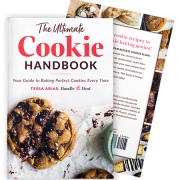
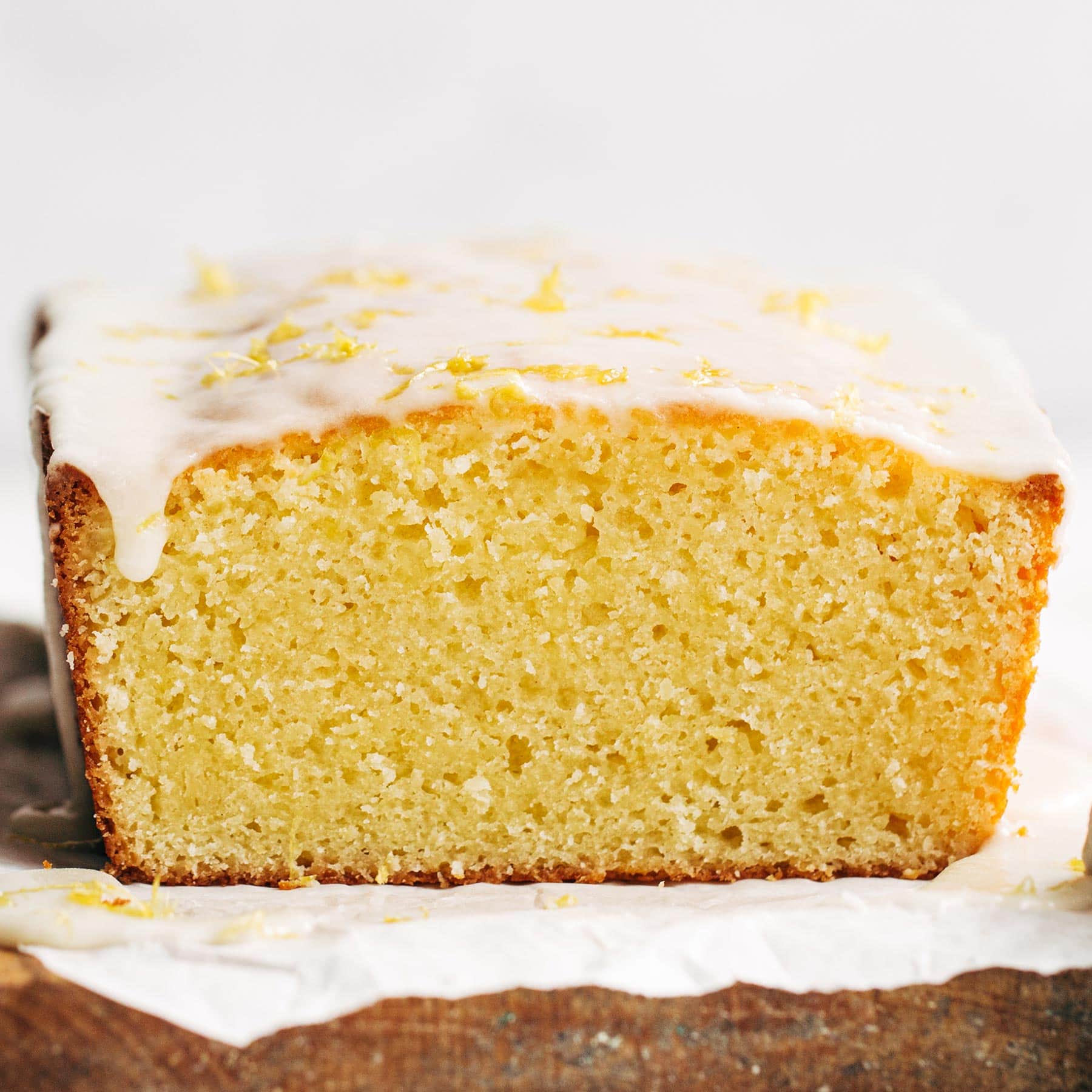

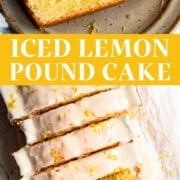


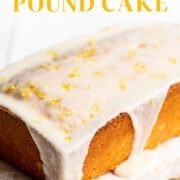
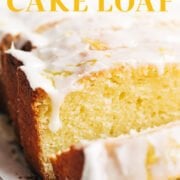

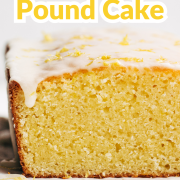
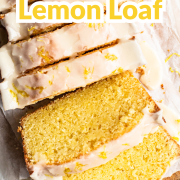
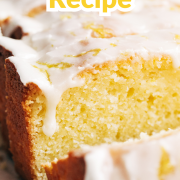
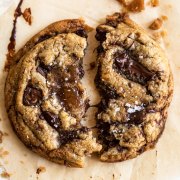
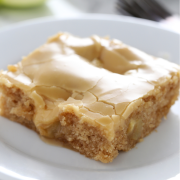

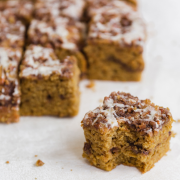
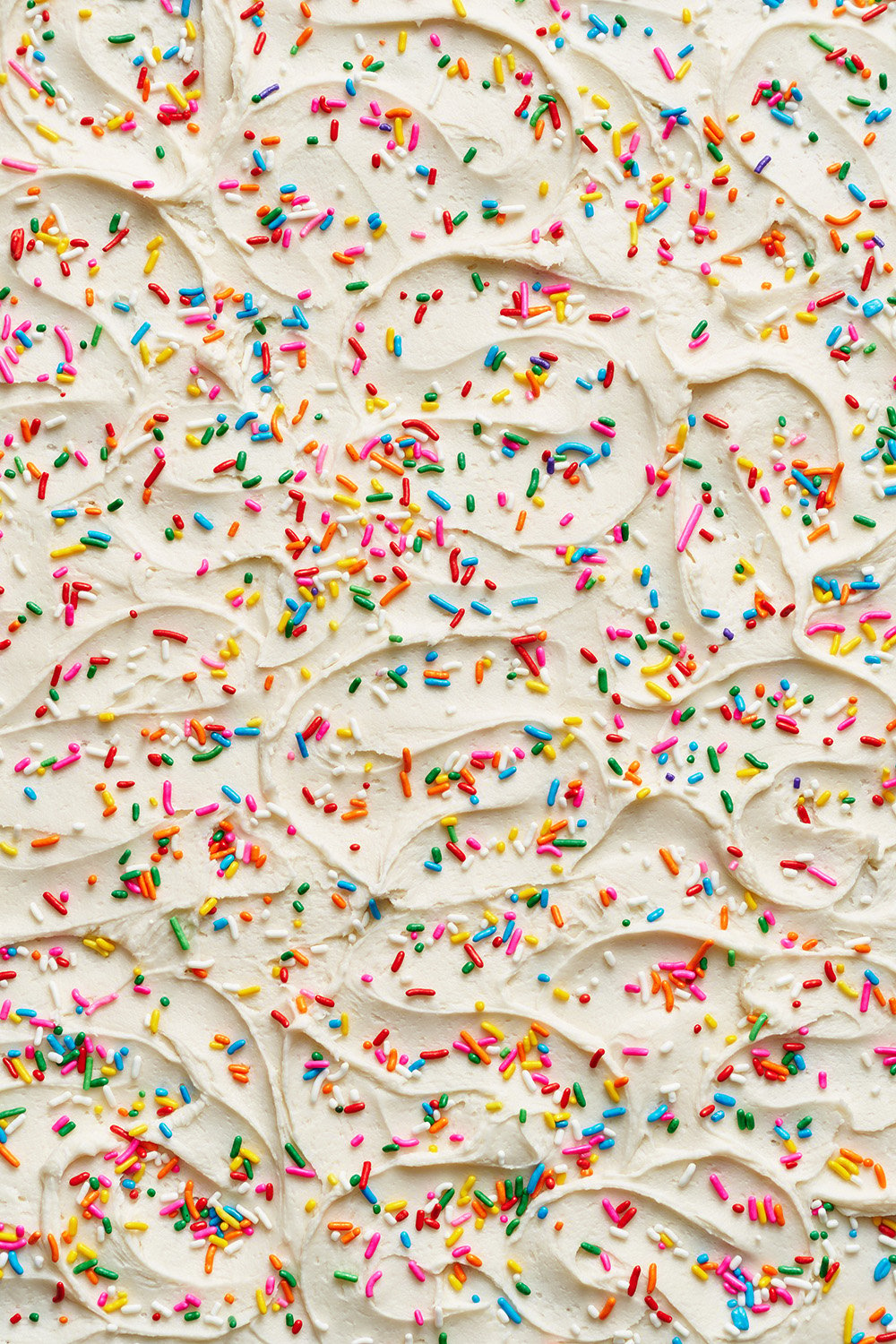




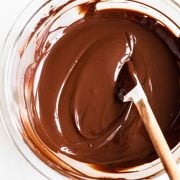









This recipe is sooooo delicious! I love Starbucks lemon pound loaf and this is as good if not better! My boyfriend and I demolished the whole loaf in one day. I’m going to have to make this again! (Tip for the leftover lemon juice: make some homemade lemonade to drink while you’re waiting for your loaf to bake! I love fresh lemonade ♡ )
I have GOT to try the homemade lemonade with my next loaf, great idea! I’m so happy to hear you both loved this recipe so much 🙂
Hi Tessa, I have a question.
I love the lemon bundt cake recipe which you shared. I have made it several times and my family and friends love them. But I have a question which I have tried several methods but I can’t get it right.
How do you get the lemon zest to be so lovely sitting on top of the icing?
I noticed “leaks” on icing sliding down from the vest when I put the zest.
Regardless thick or thin icing, fresh lemon zest or zests which I keep it aside (hoping it will dry up a little).
The mini leaks still appear.
I’m happy to hear you love this recipe so much! I’m thinking your mini leaks are appearing due to the moisture in the lemon zest. The longer your loaf sits, the zest will also pick up more moisture from your glaze, so I’m honestly not really sure of a way to stop that! The only thing I can think of to try would be to pat dry your zest with some paper towel and see if that helps. Keep me posted if you find a solution!
Great lemon flavor and texture.
Divine! Delicious! I didn’t want to share but I did and all thought it was delicious!
Happy to hear it was such a hit! 🙂
My husband likes this, and he hates lemon things!
So awesome to hear!!
I made this loaf for the first time and it was really good! I think I messed it up with mixing the butter in one go and baking it a bit too long, but the taste is still very good!! I recommend everyone to at least try this recipe once or like I will do: bake it multiple times
I’m glad you still enjoyed this recipe! I can’t wait to hear how your next loaf goes! 🙂
This is a wonderful pound cake! Will definitely make it again!
This has by far been my family’s favorite recipe this spring. I’ve made it least 5 times and my kids still get excited.
I’m so happy to hear it’s such a hit! Hooray 🙂
For me, the lemon flavor in the cake was completely lost once baked. Just tasted like a sweet eggy cake. Still delightful but no lemon flavor there for me with following the recipe. The icing brings the lemon flavor in! So bites with the frosting made the lemon part of the loaf pronounced. Overall, tasty recipe! Not as lemony as I was imagining though.
I’m sorry to hear that! Your lemon loaf should have a buttery and lemony flavor to the loaf after being baked, but you are correct, the glaze gives it an extra oomph of lemon 🙂 Did you substitute any ingredients? I want to make sure you used a digital scale to measure your ingredients as well.
Look out, Starbucks! This cake has really amazing lemon flavor. And the lemon glaze puts it over-the-top!
Loved making this recipe. It’s a winner! Added some blueberries too!
so fun to make! i added some extra powdered sugar on top and can’t wait to taste!